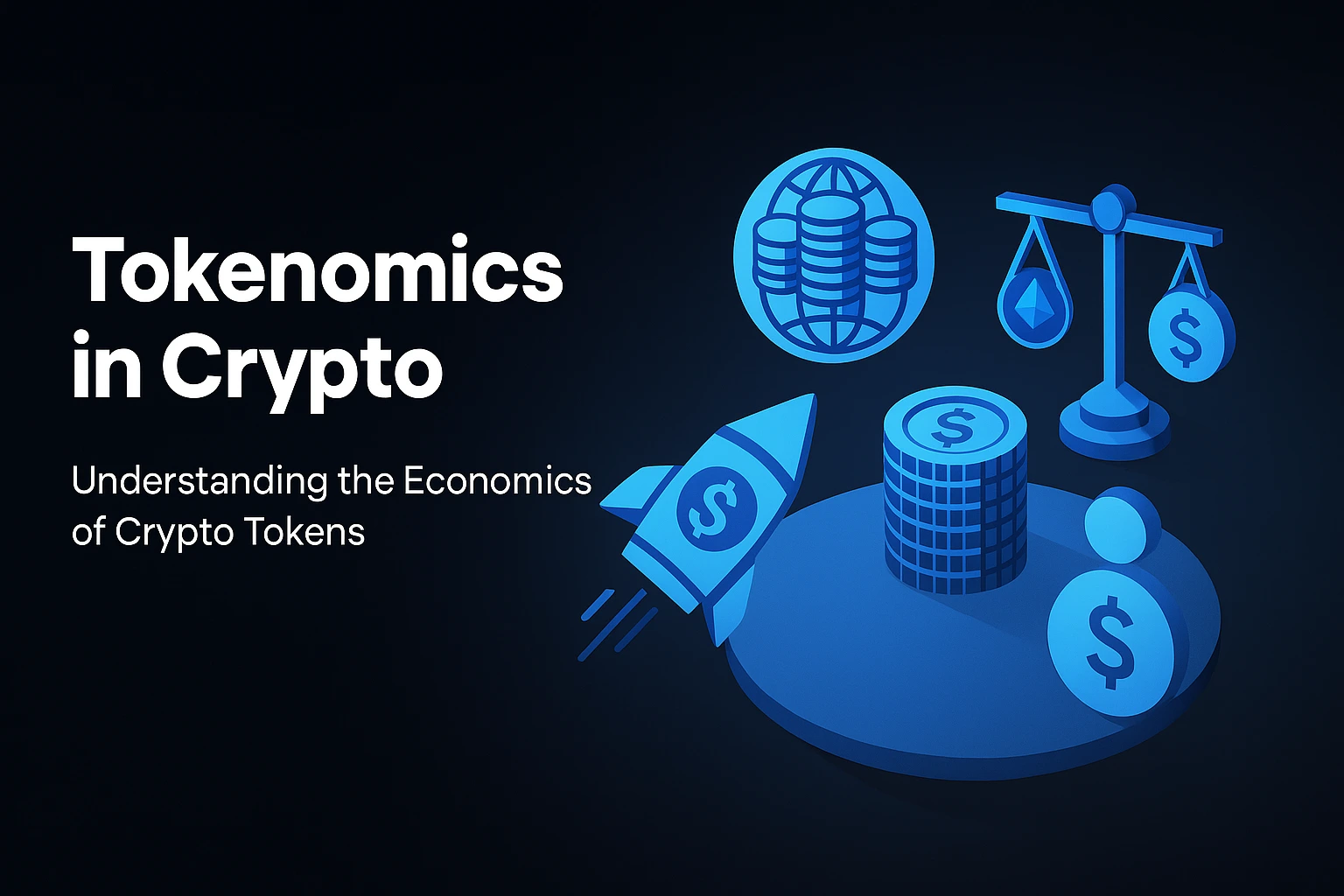The crypto space has evolved dramatically since Bitcoin’s inception, and one concept that separates successful projects from failures is their tokenomics. After spending years navigating bull and bear markets, I’ve witnessed how solid token economics can make or break a project’s long-term sustainability.
Understanding what tokenomics in crypto represents isn’t just academic knowledge—it’s the foundation for making informed investment decisions and recognizing projects with genuine staying power.
What is Tokenomics in Crypto?
Tokenomics, a portmanteau of “token” and “economics,” refers to the economic model governing a cryptocurrency or digital token. It encompasses everything from supply mechanics and distribution methods to utility functions and incentive structures that drive token value and ecosystem growth.
Think of tokenomics as the DNA of a crypto project. Just as DNA determines an organism’s characteristics and survival capabilities, tokenomics shapes how a token behaves in the market, how it creates value for holders, and whether it can sustain long-term growth.
The significance of crypto tokenomics extends beyond simple price movements. It determines:
- How tokens enter circulation
- What drives demand for the token
- How the project sustains itself financially
- Whether early investors and team members have proper incentive alignment
- The project’s resistance to economic attacks and market manipulation
Key Aspects of Tokenomics
Supply Mechanics
The foundation of any token’s economics lies in its supply structure. This includes total supply, circulating supply, and emission schedules that control how new tokens enter the market.
Fixed vs. Inflationary Supply Some tokens, like Bitcoin, have a capped supply of 21 million coins, creating digital scarcity. Others employ inflationary models where new tokens continuously enter circulation, often to reward network participants or fund development.
Emission Schedules How quickly tokens are released dramatically impacts price stability. Projects with sudden large token unlocks often experience significant price volatility, while gradual emissions tend to create more stable growth patterns.
Token Distribution
Fair and transparent distribution builds trust and prevents excessive centralization. Key distribution categories include:
- Public sales (ICO, IDO, public offerings)
- Private sales to institutional investors
- Team and advisor allocations
- Treasury reserves for development
- Community rewards and airdrops
- Liquidity provisions for exchanges
Utility and Demand Drivers
Successful tokenomics creates genuine utility that drives sustainable demand. Common utility functions include:
Governance Rights Token holders can vote on protocol changes, treasury management, and strategic decisions, giving them real influence over the project’s direction.
Fee Payments Many DeFi protocols require tokens for transaction fees, creating consistent demand as platform usage grows.
Staking Rewards Users lock tokens to secure the network or provide liquidity, earning rewards while reducing circulating supply.
Access Rights Some tokens grant access to exclusive features, premium services, or early participation in new opportunities.
Burn Mechanisms
Token burning permanently removes tokens from circulation, potentially increasing scarcity and value for remaining holders. Effective burn mechanisms tie directly to platform usage or revenue generation.
What is an Example of Tokenomics in Crypto?
Let’s examine Ethereum’s tokenomics transformation with EIP-1559 as a practical example of sophisticated crypto token economics.
Ethereum’s Evolution
Before EIP-1559, Ethereum had a purely inflationary model where miners received all transaction fees plus block rewards. This created unlimited ETH supply growth with no deflationary pressure.
The London Hard Fork introduced several critical changes:
Base Fee Burning Every transaction now burns a portion of ETH, creating deflationary pressure during high network activity. When usage spikes, more ETH gets destroyed than created, making the token deflationary.
Dynamic Fee Structure Base fees adjust automatically based on network congestion, improving user experience while maintaining the burn mechanism’s effectiveness.
Staking Yield Post-merge, ETH holders can stake their tokens to secure the network, earning approximately 4-6% annual rewards while contributing to network security.
Results and Impact
This tokenomics redesign transformed ETH from a purely inflationary asset to one with built-in scarcity mechanisms. During peak usage periods, ETH becomes deflationary, with more tokens burned than created.
The staking mechanism also creates a “stake yield carry trade” where institutions borrow ETH at low rates to stake for higher yields, creating additional demand pressure.
How to Check Tokenomics
Analyzing tokenomics requires examining multiple data sources and understanding both quantitative metrics and qualitative factors.
Essential Tools and Resources
CoinGecko and CoinMarketCap These platforms provide basic tokenomics data including total supply, circulating supply, market cap, and basic distribution information.
Token Terminal Offers advanced metrics for DeFi and Web3 projects, including revenue, fees, active users, and token holder distributions.
Messari Provides comprehensive tokenomics profiles with detailed supply schedules, unlock calendars, and fundamental analysis.
Project Documentation Always review the official whitepaper, tokenomics documentation, and governance proposals for the most accurate information.
Key Metrics to Evaluate
| Metric | What to Look For | Red Flags |
|---|---|---|
| Circulating Supply | Realistic percentage of total supply | Less than 10% circulating |
| Token Distribution | Balanced allocation between stakeholders | Team/insiders holding >50% |
| Unlock Schedule | Gradual, predictable releases | Large cliff unlocks |
| Revenue Model | Clear path to sustainable income | No revenue generation plan |
| Burn Rate | Meaningful token destruction | Cosmetic burns with no impact |
Vesting Schedules Analysis
Understanding when large token allocations unlock is crucial for timing investments. Projects with upcoming major unlocks often experience price pressure as early investors and team members gain liquidity.
Look for:
- Cliff periods before vesting begins
- Linear vs. exponential vesting curves
- Percentage of supply unlocking over specific timeframes
- Historical price impact of previous unlocks
How Does Tokenomics in Crypto Work?
Crypto tokenomics operates through interconnected mechanisms that create value flows, incentive alignment, and sustainable economic loops within digital ecosystems.
Value Accrual Mechanisms
Revenue Sharing Some tokens directly share protocol revenue with holders through dividends, buybacks, or fee redistribution. This creates clear value accrual tied to business performance.
Network Effects As more users adopt a platform, token utility increases, driving demand. Successful projects create positive feedback loops where growth attracts more users, increasing token value, which attracts more users.
Scarcity Creation Beyond simple supply caps, sophisticated projects use dynamic mechanisms like:
- Algorithmic supply adjustments based on demand
- Automatic burns triggered by usage metrics
- Staking lockups that reduce liquid supply
Incentive Alignment
Well-designed tokenomics aligns all stakeholders toward common goals:
User Incentives Early users often receive token rewards for contributing to network growth, whether through transactions, referrals, or content creation.
Developer Incentives Many projects allocate tokens to fund development, bug bounties, and ecosystem grants, ensuring continuous improvement and innovation.
Validator/Node Operator Incentives Blockchain networks reward participants who secure the network, creating economic incentives for decentralization and security.
Economic Sustainability Models
Fee-Based Models
Projects generate revenue through transaction fees, with portions used for:
- Development funding
- Token buybacks
- Validator rewards
- Community treasury accumulation
Inflation-Based Models
Some projects use controlled inflation to fund operations while providing utility that outpaces dilution:
- DeFi yield farming rewards
- Gaming token rewards for player engagement
- Content creator rewards in social platforms
Hybrid Approaches
The most sophisticated projects combine multiple mechanisms, creating robust economic systems resistant to market volatility and changing conditions.
Advanced Tokenomics Considerations
Cross-Chain Economics
Modern crypto projects often operate across multiple blockchains, creating complex tokenomics involving:
- Bridge mechanics and liquidity management
- Multi-chain fee structures
- Governance coordination across networks
- Arbitrage opportunities and risks
Regulatory Impact
Tokenomics design increasingly considers regulatory implications:
- Securities law compliance for governance tokens
- Utility token classifications to avoid securities designation
- Geographic restrictions and compliance mechanisms
- Tax-efficient structures for different jurisdictions
Game Theory and Attack Vectors
Sophisticated tokenomics considers potential attack vectors:
- Flash loan attacks on governance systems
- Economic manipulation through large token positions
- Vampire attacks from competing protocols
- Coordination failures in decentralized systems
Frequently Asked Questions
What makes good tokenomics in crypto?
Good tokenomics combines sustainable supply mechanics, clear utility that drives genuine demand, fair distribution that prevents excessive centralization, and incentive structures that align all stakeholders toward long-term success. The best designs create positive feedback loops where increased usage drives token value, which attracts more users and developers.
How do you calculate tokenomics?
Calculating tokenomics involves analyzing multiple factors: current and future supply schedules, demand drivers based on utility and adoption, revenue generation and distribution mechanisms, and comparative valuation against similar projects. Key formulas include fully diluted valuation (FDV = token price × total supply) and various yield calculations for staking or revenue-sharing mechanisms.
Can tokenomics change after launch?
Yes, most modern crypto projects can modify their tokenomics through governance mechanisms. Token holders vote on proposals for changes like burn rate adjustments, fee structure modifications, or supply schedule alterations. However, fundamental changes often require significant community consensus and may face resistance from stakeholders who

